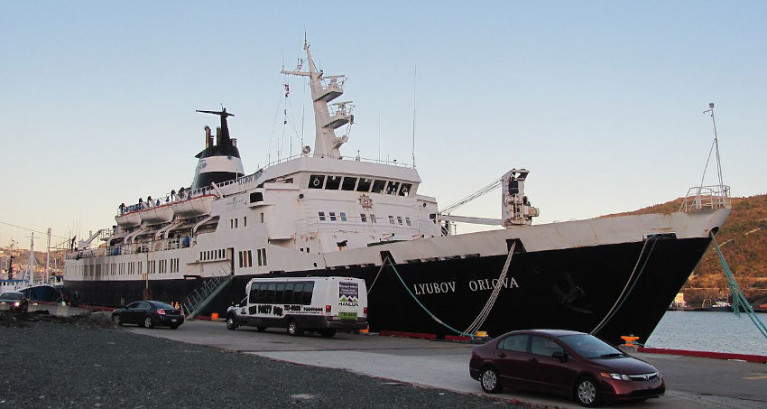Displaying items by tag: MV Alta
Wreck of Ghost Ship MV Alta Has Changed Our Lives for the Worse, East Cork Locals Say
Locals in the area where the ghost ship MV Alta washed ashore nearly three years ago say their lives have been changed for the worse by the wreck’s presence on their doorstep.
Speaking to The Journal for a special feature, the residents of Ballyandreen Bay near Ballycotton in East Cork describe a locale ill prepared for the influx of visitors drawn by the wreck, which washed ashore in February 2020, with their impact including a devastating cliffside fire that threatened local homes.
Other residents have complained of damage to crops and fences that has endangered their livestock, and of alleged looting of farm equipment, impacting severely on their livelihoods
One farmer, Liam Morrison, spoke of the shock of finding “thousands” of people on his field — and the abuse he claims he received from some visitrs.
“We had no problem for many years and I welcome the tourists. They didn’t go across the crops and they didn’t do any damage. But these people [drawn by the MV Alta] had no respect for anything — it changed my attitude towards people,” he said.
The Journal has much more on the story HERE.
Cork's 'Ghost Ship' MV Alta May Not Survive the Winter as Photos Show It Breaking Up
The ghost ship MV Alta made famous, after been washed ashore close by of Ballycotton, Co.Cork, during a storm in February 2020, may not last another winter on the rocks, going by the latest images of the shipwreck.
Corkman Charlie Wilkins, a keen amateur photographer, captured the sorry state of the Alta last week when he got some great photos of the wreck in the autumn sunshine.
The photos show the vessel is broken in half, with upperworks looking dangerously unstable and set to break up further, with the likelihood being that large sections of what are left will fall off the rocks and into the deeper water below.
The MV Alta was abandoned at sea by crew in October 2018 after the ship suffered a total engine failure southwest of Bermuda. They were taken off by the US Coast Guard and the ship then began a long, lonely journey, drifting across the Atlantic.
CorkBeo has more on the 1976 built freighter.
Ireland needs to appoint a Secretary of State’s Representative to deal with any future maritime or shipping incidents similar to the beaching of the MV Alta, a maritime expert advises.
Captain Neil Forde, a maritime consultant with Marine Hazard Ltd, tells the Irish Examiner that the ‘ghost ship’ which ran around in Ballycotton at the weekend is proving to be an “insurmountable bureaucratic obstacle” to measures to deal with the cargo ship, which underwent an environmental assessment yesterday (Tuesday 18 February).
“We are going to have a major maritime incident at some point, it is just inevitable … The county council, who even with the best will and intention is only going to be able to deal with small incidents, has been pushed into dealing with this by the current legislation,” he said.
Another ‘ghost ship’, the MV Lyobov Orlova — its decks infested with ‘cannibal’ rats — could pose a biohazard threat to Ireland if it reached these shores.
A straightforward solution, Capt Forde suggests, is to appoint a single expert whose “job is to say to the different agencies ‘you are going to do this’, no ifs or buts about it, and to deal with the situation quickly”.
The Irish Examiner has more on the story HERE.
























































